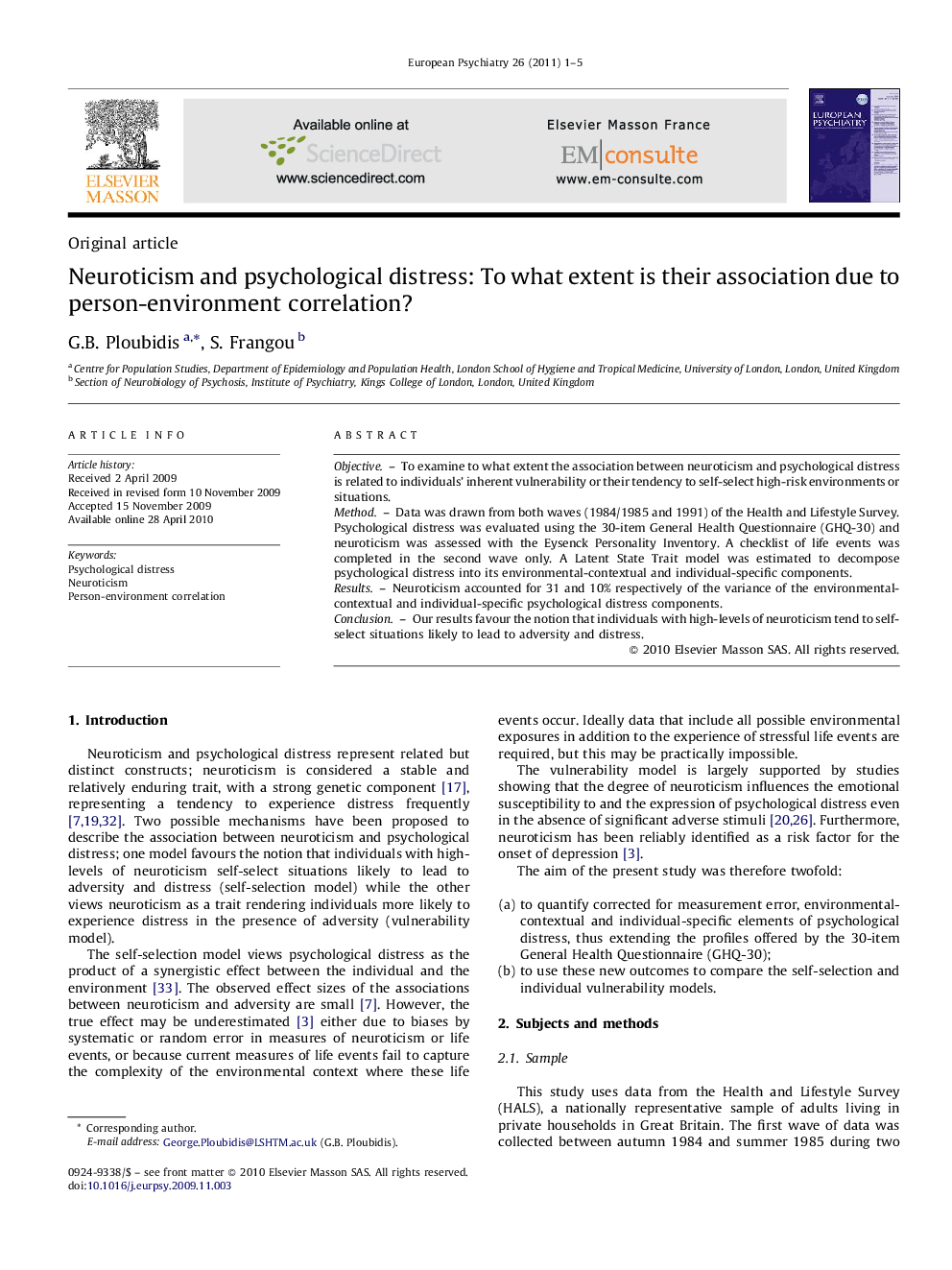| Article ID | Journal | Published Year | Pages | File Type |
|---|---|---|---|---|
| 4185076 | European Psychiatry | 2011 | 5 Pages |
ObjectiveTo examine to what extent the association between neuroticism and psychological distress is related to individuals’ inherent vulnerability or their tendency to self-select high-risk environments or situations.MethodData was drawn from both waves (1984/1985 and 1991) of the Health and Lifestyle Survey. Psychological distress was evaluated using the 30-item General Health Questionnaire (GHQ-30) and neuroticism was assessed with the Eysenck Personality Inventory. A checklist of life events was completed in the second wave only. A Latent State Trait model was estimated to decompose psychological distress into its environmental-contextual and individual-specific components.ResultsNeuroticism accounted for 31 and 10% respectively of the variance of the environmental-contextual and individual-specific psychological distress components.ConclusionOur results favour the notion that individuals with high-levels of neuroticism tend to self-select situations likely to lead to adversity and distress.
